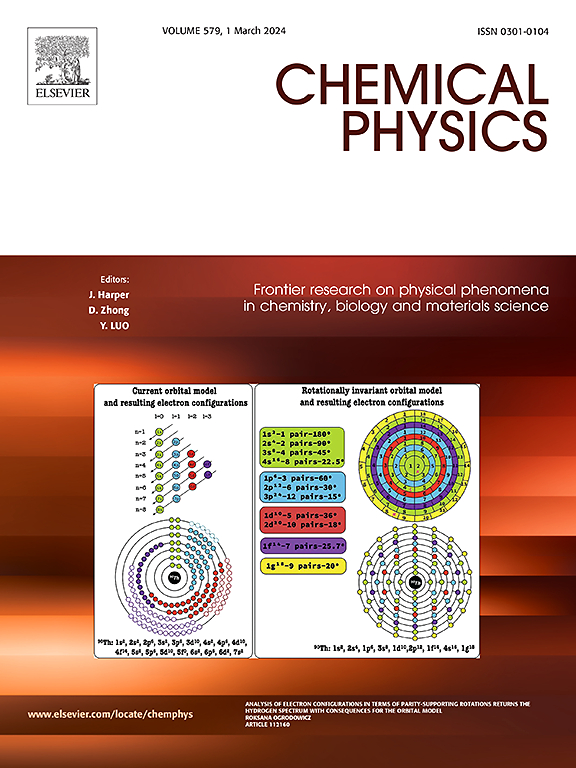First-principles investigation of Sc and Ti-decorated hBN monolayers as adsorbents and gas sensors for SF6 decomposition products
IF 2
3区 化学
Q4 CHEMISTRY, PHYSICAL
引用次数: 0
Abstract
The sulfur hexafluoride (SF6) gas disintegrates into low fluorine gases when high-voltage and power circuits are utilized often. Therefore, timely identification and collection of the degraded gases is essential to the SF6 electrical circuit breakers (ECBs) successful functioning. This study used density functional theory (DFT) simulations to evaluate the gas sensing and adsorption properties of the SF6 breakdown products SO2F2, SOF2, SO2, H2S, and HF on a Scandium (Sc) and Titanium (Ti) decorated hBN monolayer. The results showed that when exposed to gas molecules with appropriate adsorption energy, pure hBN desorption occurred quickly. Sc and Ti decoration of hBN may improve its adsorption capacity for uses in gas adsorption and sensing. The adsorption analysis of SO2F2, SOF2, SO2, H2S, and HF adsorbed on Sc-decorated hBN monolayer revealed the corresponding adsorption energies are -1.29, -1.21, -1.15, -1.06, and -0.94 eV. However, Ti-decorated hBN exhibits gas adsorption energies of -1.51, -1.31, -1.29, -1.17, and -0.99 eV, respectively. The investigation of the gas sensing mechanism focuses on the sensing material's band structure and work functions. Although Sc has lower adsorption energies than Ti, it was demonstrated that Sc decorated hBN was even more sensitive to all gas molecules than Ti. The room-temperature release time of gas molecules may be shortened to nanoseconds by heating them to 500 K or exposing them to UV radiation at 300 K. This study provides theoretical predictions for evaluating the gas sensing capabilities of hBN monolayer decorated with Sc and Ti for detecting SF6 breakdown products.

求助全文
约1分钟内获得全文
求助全文
来源期刊

Chemical Physics
化学-物理:原子、分子和化学物理
CiteScore
4.60
自引率
4.30%
发文量
278
审稿时长
39 days
期刊介绍:
Chemical Physics publishes experimental and theoretical papers on all aspects of chemical physics. In this journal, experiments are related to theory, and in turn theoretical papers are related to present or future experiments. Subjects covered include: spectroscopy and molecular structure, interacting systems, relaxation phenomena, biological systems, materials, fundamental problems in molecular reactivity, molecular quantum theory and statistical mechanics. Computational chemistry studies of routine character are not appropriate for this journal.
 求助内容:
求助内容: 应助结果提醒方式:
应助结果提醒方式:


